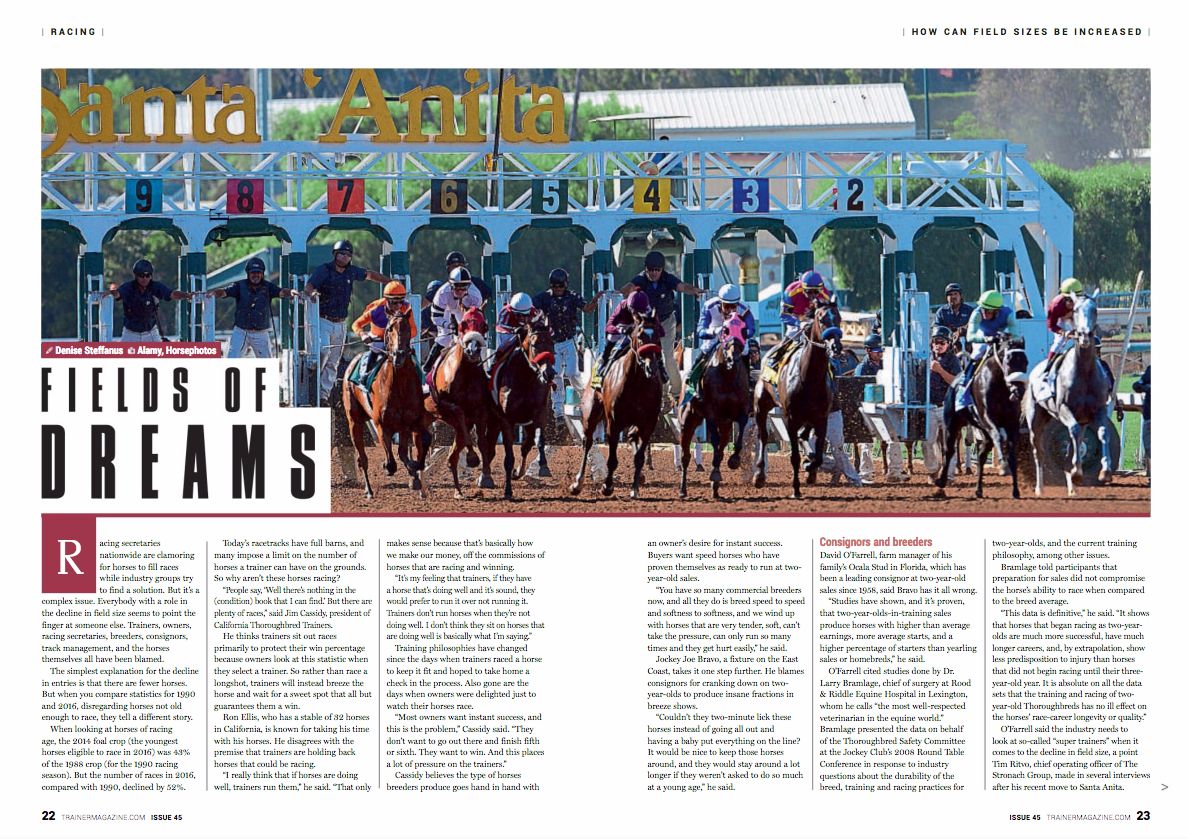Changing hemispheres
/By Jeff Lowe
For as long as racehorses have been moved from one hemisphere to the other, the effect of crossing the equator has been an age-old mystery. How much recovery time a horse generally needs, and why, is still a complex issue for American trainers who regularly find success with horses from the Southern Hemisphere.
Hall of Fame trainers Richard Mandella and Ron McAnally follow a similar timetable before they generally feel comfortable sending a horse from the Southern Hemisphere to the races. Mandella, who has a long list of South American stars like Bal a Bali, Redattore, Gentlemen, Sandpit and Siphon accentuating his career highlights, suggested that four months is an ideal amount of time once a horse arrives to the United States before his or her first race. McAnally, with a roll call from Argentina that includes Candy Ride, Different, Paseana, Festin and Bayakoa, operates with a ballpark estimate of four to six months.
"I could not tell you why they need that long," McAnally said. "It would take God almighty upstairs to answer that.
“I just know that with a horse like Candy Ride, he had about six months once he got here and he was ready to go; he won an allowance on the dirt at Hollywood Park, then he won a nine-furlong Gr2 on the turf at Hollywood Park, and he won the Pacific Classic [a $1-million Gr1] going a mile and a quarter at Del Mar.”
Mandella's and McAnally's calendar does fly in the face of the schedule of a giant gelding who helped blaze the trail from the Southern Hemisphere to the U.S. Australian legend Phar Lap traveled 10,000 miles by ship to San Francisco in the winter bridging 1931 and '32, arriving January 15. He promptly ran away with the Aqua Caliente Handicap in Mexico just two months later, setting a track record before mysteriously dying that April.
Likewise, with the shoe on the other foot, horses from Europe regularly trek to Australia for prestigious races. Godolphin Racing's Cross Counter arrived "Down Under" last September 8 from England and came away with a victory in the Gp1 Melbourne Cup two months later. European shippers have won the Melbourne Cup five times in the last nine editions.
Black Caviar wins the Gp1 Diamond Jubilee Stakes at Ascot
Heading the other way, horses from Australia have been successful right off the bat in Europe, with the prolific sprinter Black Caviar as perhaps the most notable example. She won the Gp1 Diamond Jubilee Stakes at Royal Ascot just six weeks after prevailing in the Gp1 Goodwood in Adelaide, Australia. Aidan O’Brien’s spectacular success from his Ballydoyle base in Ireland has featured a few imports from Australian and New Zealand, among them a top-caliber sprinter in Starspangledbanner and a 10-furlong specialist in So You Think.
Starspangledbanner, like Black Caviar, scored in the 2006 edition of the Gp1 Golden Jubilee at Royal Ascot, just a couple months after arriving from Australia. Conversely, So You Think had six months in between his final start “Down Under” and his European debut in Ireland.
“It all depends on the individual horse and how they adapt,” O’Brien said. “No doubt, when they don’t have to stop training and can continue exercise in quarantine, [it] is a big help.”
Mandella suggested that a break is often necessary for a Southern Hemisphere horse to adjust to its new environment and build back up after a long season back home. The differences in the U.S. include the makeup of the racetracks, as some dirt tracks in South America are much harder than the sandy loam in place at Santa Anita and elsewhere in the states. South American imports also have to adjust to wearing a saddle in their training each day, whereas back home they usually would only be ridden with a saddle in workouts and races.
"I let them down and bring them back easy and by the time I get them ready it's about four months, and I think that works real well," Mandella said. "Generally they have done quite a bit to earn the chance to come here, so they are due [for some time off], but the difference in the environment and the training is probably the biggest change, and you have to kind of re-train them to our style of training with saddles every day, traffic they have to face—those kind of things that we have at our American racetracks."
TO READ MORE —
BUY THIS ISSUE IN PRINT OR DOWNLOAD -
Spring 2019, issue 51 (PRINT)
$6.95
Spring 2019, issue 51 (DOWNLOAD)
$3.99
Add to cart
WHY NOT SUBSCRIBE?
DON'T MISS OUT AND SUBSCRIBE TO RECEIVE THE NEXT FOUR ISSUES!
Print & Online Subscription
$24.95





























